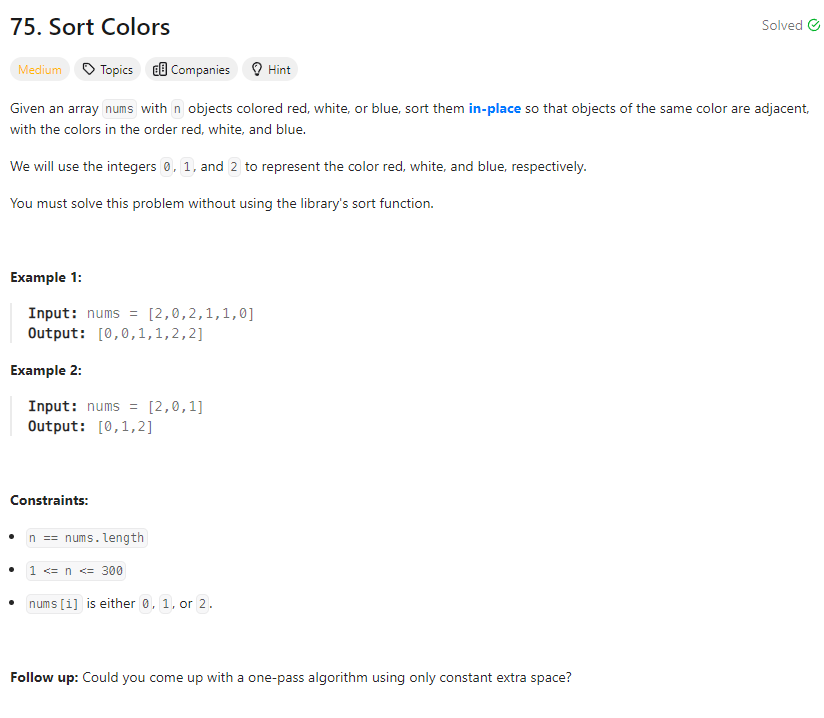Problem of The Day: Sort Colors
Problem Statement

Intuition
My first thought for solving this problem was to use the Dutch National Flag algorithm. This approach allows us to sort the array in a single pass by using three pointers to partition the array into three sections: one for 0s, one for 1s, and one for 2s. This way, we can sort the colors with a linear time complexity.
Approach
I will use three pointers: l for the left boundary of the 0s, m for the current element being examined, and r for the right boundary of the 2s. Initially, all pointers will be set at the start, middle, and end of the list respectively.
I will iterate through the list with the m pointer. If the current element is 0, I’ll swap it with the element at the l pointer, and increment both l and m. If the current element is 2, I’ll swap it with the element at the r pointer and decrement r. If the current element is 1, I’ll simply move the m pointer to the next element.
Complexity
- Time complexity: (O(n))
- Each element is processed at most once, leading to linear time complexity.
- Space complexity: (O(1))
- The sorting is done in-place, so the space complexity is constant.
Code
class Solution:
def sortColors(self, nums: List[int]) -> None:
"""
Do not return anything, modify nums in-place instead.
"""
l, r = 0, len(nums) - 1
m = 0
while m <= r:
if nums[m] == 2:
nums[m], nums[r] = nums[r], nums[m]
r -= 1
elif nums[m] == 0:
nums[m], nums[l] = nums[l], nums[m]
m += 1
l += 1
else:
m += 1